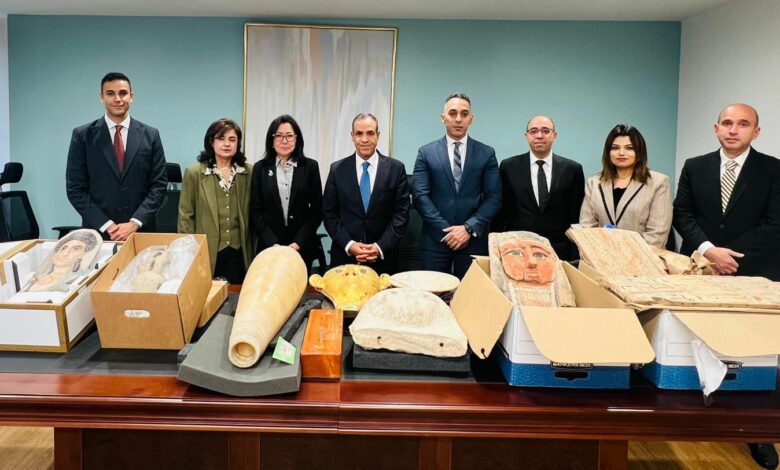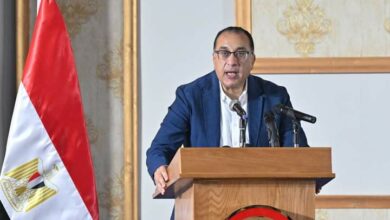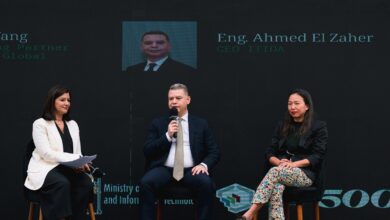
I was pleased by President Abdel Fattah al-Sisi’s order emphasizing the need to construct a new museum storage facility based on modern standards for artifact preservation.
In my view, the ideal location for this vault is the New Administrative Capital, specifically within the Arts and Culture District.
First, I must point out that the core issue facing our antiquities is not the lack of new storage facilities. In 2002, when I assumed the responsibility of Secretary-General of the Supreme Council of Antiquities, we agreed to build 50 museum storerooms across the country.
It was these very storerooms that saved our artifacts during the bitter events that followed January 2011.
Therefore, the real problem is not the absence of storage. When news of theft occurs at a museum or depot, the public should not immediately attack archaeologists and restorers without examining the true cause behind the thefts.
For instance, the theft of an ancient bracelet, as we learned, was carried out by a restorer working at the Egyptian Museum—an incident that, to my recollection, was the first of its kind where a restorer embezzled an artifact from their own custody.
The reasons behind this incident must be investigated with complete honesty and transparency, and a review of every site where this restorer worked before her transfer to the Egyptian Museum must be conducted.
Furthermore, there is no organized “mafia” for antiquities theft in Egypt, as some like to claim.
Based on the cases we intercept, I can almost confirm that about 90 percent of them are scams and frauds. This means an artifact dealer cheats a buyer by making them believe the item offered for sale and smuggling is genuine, when in reality, it is a fake.
Many may not realize that the world is, in fact, full of gullible people who have paid enormous fortunes for counterfeit artifacts from Egypt and other countries. Some of these fraudulent pieces have even found their way into well-known major museums and were displayed for years before their authenticity was exposed and they were removed.
Archaeologists continue to cast doubt on dozens of pieces still on display in foreign museums to this day, and verification remains ongoing.
I will continue to call for the mandatory separation of Tourism and Antiquities. As I have stated repeatedly, if tourism is mismanaged, it becomes an enemy to antiquities.
Therefore, tourism must be managed through an integrated national system encompassing all state sectors so that the industry truly becomes a source of national income while simultaneously ensuring the safety of our artifacts.
I discussed this with my friend, Khaled al-Enany, when he took over the merged Ministry of Tourism and Antiquities, and I stressed that combining them into a single ministry would create numerous problems.
Antiquities should instead remain a Supreme Council headed by a non-portfolio Minister, or be established as an independent Supreme Council of Antiquities led by an archaeologist and accountable directly to the Cabinet.
I previously conveyed this exact view to the Prime Minister when I was assigned as Minister for the second time, emphasizing that antiquities should be independent from the ministerial portfolio to ensure stability and maintain focused archaeological work.
Building a new storage facility is not the only step forward.
We must also raise awareness about the critical need to train the archaeologists responsible for these storerooms on the use of advanced technology for registration and preservation. Unfortunately, we are still far behind in utilizing modern database systems and their enormous capabilities, which not only assist in registering artifacts but also allow for complete control over their movement and accountability for transport – alongside providing comprehensive data on every single piece.
Therefore, a fully integrated project, provided with sustainable resources and high-level training courses for all archaeologists involved in database management, is vital. Is it acceptable for archaeologists at the Egyptian Museum to suffer from constant internet outages and the lack of server updates to preserve their databases?
The project I initiated years ago at the Egyptian Museum is on the verge of collapse due to the consistent lack of attention to its importance. As a result, over 80 percent of the young staff trained for this project have left due to poor resources. We have thus lost not only young minds but also the funds invested in their training and education.
Were the officials responsible for this held accountable?
Restorers within each region must be tasked with creating a program for the conservation of the artifacts stored inside their museum depots. A knowledgeable department should be established to oversee these storerooms and monitor the registration and restoration process.
This department should be considered one of the most critical within the Supreme Council of Antiquities.
I can barely imagine that in Saqqara, workers are still using ancient tombs as storage facilities, despite the fact that we previously constructed three high-standard museum storerooms there, and a fourth is currently under construction. This practice must come to an end.
I extend my deep appreciation and encouragement to the Secretary-General of the Supreme Council of Antiquities, Mohamed Ismail, for his remarks during his excellent interview with the renowned media personality Amr Adib.
Ismail clarified that the theft of the stela from the tomb occurred around 2018, and that investigative committees have succeeded in uncovering the details of the theft.
The Secretary-General then referred the case to the Public Prosecution Office for investigation.
This highlights the importance of having an antiquities official who is fully aware of events and presents the truth clearly to the public.




